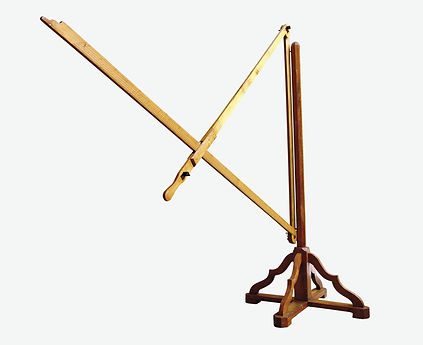In medieval times, around the 12th and 13th centuries, astronomers and scholars used various instruments to measure celestial objects and phenomena. Although their methods and instruments were not as advanced as modern technology, they made significant contributions to our understanding of the heavens. Here are some of the instruments commonly used during the medieval period:
Astrolabe
Astrolabe: The astrolabe was one of the most important astronomical instruments of the Middle Ages. It consists of a circular disk with several scales and rotating parts. It allowed astronomers to measure the positions of stars and other celestial bodies, determine time and make calculations related to celestial navigation.


Quadrant
A quadrant was a quarter-circle instrument used to measure angles and the altitude of celestial objects. It consisted of a formed arc, a sighting arm, and a plumb line to measure the vertical angle.
Armillary Sphere
An armillary sphere was a model of the celestial sphere. It consisted of a series of graduated rings representing the celestial equator, the ecliptic, and other important celestial circles. Astronomers could rotate the rings to simulate the positions of celestial objects and make measurements.


Nocturnal
A nocturnal was a circular instrument used to determine the time of night by observing the positions of the stars. It consisted of a rotating disk with a small hole or star map that allowed the user to align specific stars with the current time.
Cross-staff:
The cross-staff, also known as Jacob's staff, was a simple instrument used to measure the angle between a celestial object and the horizon. It consisted of a long rod with a sliding crossbar that could be moved to align with a star or the Sun.


Quadratum Nauticum
This instrument, often referred to as a mariner's quadrant, was used primarily for celestial navigation at the sea. It allowed sailors to measure the altitude of celestial bodies, such as the Sun or the stars, to determine their position.
Equatorium
The equatorium was a complex instrument used to determine the positions of celestial bodies, particularly the Moon and planets. It involved a series of rotating gears and disks to calculate their positions based on various astronomical theories.


Torquetum
The Torquetum is a medieval astronomical instrument designed to measure and convert measurements made in three coordinate systems : horizontal, equatorial, and elliptical. In a sense, the torquetum is an analog computer . The construction of the first torquetum is attributed to Jabir ibn Aflah (Geber) in the 12th or 13th century, although the only surviving examples date from the 16th century .
Sextant
The Sextant is an instrument used to measure the vertical angular distance between a star and the horizon line for the purpose of calculating the position and correcting any errors in estimated navigation.
These are just a few examples of the instruments used during the medieval period to measure and study celestial objects. While they may seem rudimentary compared to modern technology, they were significant advanced at the time and played a crucial role in expanding our knowledge of the universe.


Triquetrum
The triquetrum was an ancient astronomical instrument first described by Ptolemy in the Almagest. Also known as the Parallactic Ruler, it was used to determine the height of celestial bodies . Ptolemy calls it a "parallactic instrument" and appears to have used it to determine the distance to the zenith and the parallax of the Moon . The triquetrum was one of the most popular astronomical instruments until the invention of the telescope; it could measure angles with better accuracy than the astrolabe .